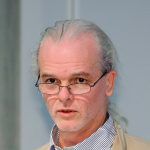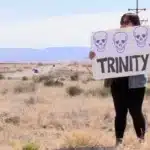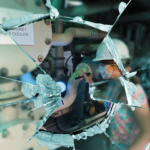2008 world nuclear industry status report: Western Europe
By Mycle Schneider | September 19, 2008
The contribution of nuclear power continues to decline in Europe. As of September, 15 of the 27 countries in the enlarged EU operated 146 reactors (about one-third of the world total), down from 177 reactors in 1989. The vast majority of these facilities (125 units) are located in eight of the western EU countries–see chart. In 2007, nuclear power produced 28 percent of the EU’s commercial electricity–down from 32 percent in 2002–and 12 percent of the region’s commercial primary energy.
The contribution of nuclear power continues to decline in Europe. As of September, 15 of the 27 countries in the enlarged EU operated 146 reactors (about one-third of the world total), down from 177 reactors in 1989. The vast majority of these facilities (125 units) are located in eight of the western EU countries–see chart. In 2007, nuclear power produced 28 percent of the EU's commercial electricity–down from 32 percent in 2002–and 12 percent of the region's commercial primary energy. More than 80 percent of the primary energy consumed in the region is provided by oil, natural gas, and coal. Moreover, 47 percent of the nuclear electricity in the EU is generated solely by France.
While four units are currently under construction in the EU, dozens of reactors will go offline in the coming years. And securing financing for future decommissioning and waste management is still a long-term headache. In August, the European Economic and Social Committee in a draft opinion stated that at least one-third of Europe's nuclear plants would be decommissioned by 2025. The committee also stated that it was "vital to adopt stringent measures that guarantee adequate funding for decommissioning on the polluter-pays principle and [secure] a high level of protection for workers and the public." The committee highlighted that new European plant projects would face hurdles including manufacturing capacity bottlenecks and a dramatic lack of skilled workers and technicians.
Only two reactors are under construction in Western European–one in Finland and one in France. Both are being built by the Franco-German consortium AREVA NP (66 percent AREVA and 34 percent Siemens). Otherwise, no new projects have broken ground in Western Europe since the French Civaux-2 unit in 1991; besides French orders and the Finnish project, no new reactor orders have been placed since 1980.
What follows is an in-depth look at the Western European countries with active nuclear energy programs:
Belgium. Seven reactors provided 46 terawatt hours or 54 percent of the country's power in 2007. In 2002, Belgium passed nuclear phase-out legislation that requires its nuclear power plants to be shut down after 40 years of operation. Therefore, according to their start-up date, the plants will be shut down between 2014 and 2025. While the legislation was passed under a coalition government that includes the Green Party, subsequent governments without green ministers haven't overturned the law.
Britain. Nineteen reactors provided 57.5 terawatt hours or 15 percent of the country's electricity in 2007. Many of Britain's nuclear plants are relatively small, particularly inefficient, and more than 30 years old. To wit, Germany's reactors produce more than twice the electricity per installed reactor. The productivity of the British reactors might further decline following the unexpected discovery of severe wearing of reactor components, according to World Nuclear News (WNN). If British Energy doesn't build new reactors by 2023, warned WNN, only the Sizewell B reactor, a modern pressurized water unit, will be operating in the country.
In 2004, London's nuclear lobby launched a major initiative, widely covered in the media, to keep nuclear power going in the country. At the time, government ministers rebutted these claims in an unusually clear manner: "Building nuclear power stations would risk landing future generations with 'difficult' legacies," said then Environment Secretary Margaret Beckett. But the current government led by Gordon Brown ardently supports nuclear power. In a September speech, Brown lauded an agreement signed between Toshiba-Westinghouse, BAE Systems, Rolls Royce, and Doosan Babcock to build an AP1000 plant in the country, which he said would give British firms 70-80 percent of the work and services required to construct the plant and secure valuable jobs in the country. At the same time, French state utility Électricité de France (EDF) is finalizing a takeover of British Energy and its out-of-date nuclear fleet.
While Brown's government touts nuclear's potential contributions, Britain's Sustainable Development Commission issued a March 2006 nuclear energy report concluding that in addition to its expense and well-known negatives (such as the waste issue), doubling British nuclear capacity by 2035 would only cut emissions by 8 percent from 1990 levels. It also noted that nuclear wouldn't contribute much of anything before 2020. Instead, the commission supported a non-nuclear approach that "could and should be sufficient to deliver all the carbon savings we shall need up to 2050 and beyond, and to ensure secure access to reliable sources of energy."
Finland. Four units supplied 22.5 terawatt hours or 29 percent of Finland's electricity in 2007. In December 2003, it became the first country in Western Europe to order a new nuclear reactor in 15 years. The utility TVO signed a contract with AREVA NP to supply a 1,600-megawatt European Pressurized Water Reactor (EPR) at Olkiluoto. Siemens, headquartered in Bavaria, received a $2.7 billion loan from the Bavarian Landesbank for the project, more than 60 percent of the contract's value at a preferential interest rate of 2.6 percent. The French public export credit agency Compagnie Francaise d'Assurance Pour Le Commerce Exterieur covered an additional $1 billion.
The construction of the plant started in August 2005, and AREVA offered to build the facility for a fixed price, minus site preparatory work and excavation. The plant would then be turned over and operated by TVO. Three years later the project is more than two years behind schedule and at least 50 percent over budget. The loss for AREVA is estimated at $2.1 billion; it remains unclear who will cover AREVA's additional costs.
In an unusually critical 2006 report on the project, Finnish nuclear safety authorities faulted AREVA managers for underestimating the time and resources needed to complete the detailed design of the Olkiluoto-3 unit. They also blamed the French company for selecting subcontractors with no prior nuclear power plant construction experience. The authorities said that the "general incompetence" was most evident in the preparations made to pour concrete for the base slab of the reactor site. Concrete poured at the site was of such low quality, the project was delayed, and some of the concrete pouring needed to be redone.
Problems at the site have since continued. AREVA is accumulating delays and even the design phase isn't yet completed. In February, two and a half years after construction started, the OL-3 project director told WNN, "At the moment, AREVA has submitted half of the plans to us. Nuclear reactors are not built without plans, at least not in Finland." On July 30, a fire raged for four hours through two levels of the reactor building, damaging the inner and outer walls of the containment structure and adding additional delays.
France. In 2007, France's 59 reactors produced 418.6 terawatt hours or 77 percent of its electricity, although only about 55 percent of its installed electricity generating capacity is nuclear. In other words, France has a huge generating overcapacity, which it uses to export electricity to neighboring countries at cheap prices. The overcapacity has also stimulated the development of highly inefficient electric space and water heating. Although France has a historically high winter peak load of 86 gigawatts, it has an even higher installed total electricity generating capacity of 116 gigawatts. The result is the equivalent of a dozen French nuclear reactors that operate only to export electricity. (For further background on France's nuclear program see "The Reality of France's Aggressive Nuclear Power Push" and "In Praise and Fear of France's Energy Policy.")
With such overcapacity, France won't need to build any new nuclear plants for a long, long time, which is still true even though its per-capita electricity consumption is 25 percent higher than in Italy and 15 percent higher than the EU average. Another reason the country doesn't need new reactors is that the average French reactor is 23 years old, relatively young in fleet lifetimes.
Paris decided to build a new unit at Flamanville because the country faces a serious problem of maintaining its competence in the nuclear field, even as it doesn't actually need any new reactors. EDF will see 40 percent of its operational and maintenance workers retire by 2015. And although EDF and AREVA have announced their intentions to hire around 750 graduates annually, the national nuclear education institutions can only provide at most some 300 per year.
The lack of competence can be observed at the Flamanville-3 EPR site. Since construction started in December 2007, the French Nuclear Safety Authority (ASN) has revealed many quality-control problems, surprisingly similar to difficulties with the Finnish Okiluoto-3 EPR. In May, ASN ordered a halt to base slab concreting for almost two months after irregularities in the application of quality-control standards had been identified.
Germany. Seventeen reactors provided 133.2 terawatt hours or 26 percent of the country's electricity in 2007. But German sources have indicated that nuclear's share of gross national power generation is really only 22 percent and has been in decline since 1997. In 2002, the parliament approved a nuclear phase-out law that will shut down all the country's nuclear power plants after an average lifetime of 32 years–or a total "nuclear electricity generating budget" of 2,623 terawatt hours, of which about one-half has already been generated. Two units have already been shut down under the law. A third unit that had been under long-term shutdown since 1988 has been closed for good. The construction of new nuclear plants and new spent fuel reprocessing facilities is prohibited.
The nuclear phase-out law is supported by the current "grand coalition" government between Christian Democrats and Social Democrats and while the nuclear lobby has not abandoned its hope to overturn it, no utility is willing to order a new plant.
The Netherlands. A single, 35-year-old, 450-megawatt nuclear plant provided 3 percent of the country's power in 2007. The original political decision to close down the reactor by 2004 was successfully overturned in the courts by the operator EPZ. In June 2006 an agreement was reached between the operator and the government, which would allow operation of the reactor up to 2033.
Spain. Eight reactors provided 52.3 terawatt hours or 17 percent of the electricity in the country in 2007. Beyond the de facto moratorium that has been in place for many years, Prime Minister Jose Luis Zapatero made the nuclear phase out a key part of his campaign. Zapatero announced at his swearing-in ceremony in April 2004 that his government would gradually abandon nuclear energy while increasing funding for renewable energy in an effort to reduce greenhouse gas emissions in accordance with the Kyoto protocol. The first unit (José Cabrera, also known as Zorita) was shut down at the end of 2006.
Sweden. Ten reactors provided 64.4 terawatt hours or 46 percent of the country's electricity in 2007. Sweden is the largest power consumer in the EU and the fourth largest in the world. The reason for this high consumption level is the widespread, inefficient use of electricity for heating. Electric space heating and domestic hot-water use account for about one-quarter of the country's power consumption.
Even though Sweden is such a large electricity consumer, the country decided in a 1980 referendum to phase out nuclear power by 2010. The country retained the phase-out date until the mid-1990s, but an active debate over the country's nuclear future led to a new inter-party deal to start the phase out earlier. So the first reactor (Barsebäck-1) was shut down in 1999, and the second (Barsebäck-2) went offline in 2005. The Swedish government agreed to pay compensation to the owners for the plant closures (about $1.2 billion for Barsebäck-1). State negotiator Bo Bylund stated in October 2004 that he expects a third Swedish plant to be closed soon after 2010, and other plant closures to take place approximately every three years. This would mean that Sweden's last nuclear plant would be closed between 2020 and 2030.
Switzerland. Five reactors provided 26.3 terawatt hours or 40 percent of the country's electricity consumption in 2007. Switzerland is also the only nuclear country that repeatedly undertakes referendums on whether to phase out nuclear power. While the phase-out option has never gained a sufficient majority, the referendums have maintained an effective moratorium on new projects. Currently, the nuclear operators have initiated a debate on potential replacements for the country's aging nuclear power plants. There are no short-term prospects for any new nuclear plants in Switzerland.
This series is a select update of the author's "World Nuclear Industry Status Report 2007," which he prepared for the Greens-European Free Alliance in the European Parliament.
Together, we make the world safer.
The Bulletin elevates expert voices above the noise. But as an independent nonprofit organization, our operations depend on the support of readers like you. Help us continue to deliver quality journalism that holds leaders accountable. Your support of our work at any level is important. In return, we promise our coverage will be understandable, influential, vigilant, solution-oriented, and fair-minded. Together we can make a difference.
Topics: Nuclear Energy















